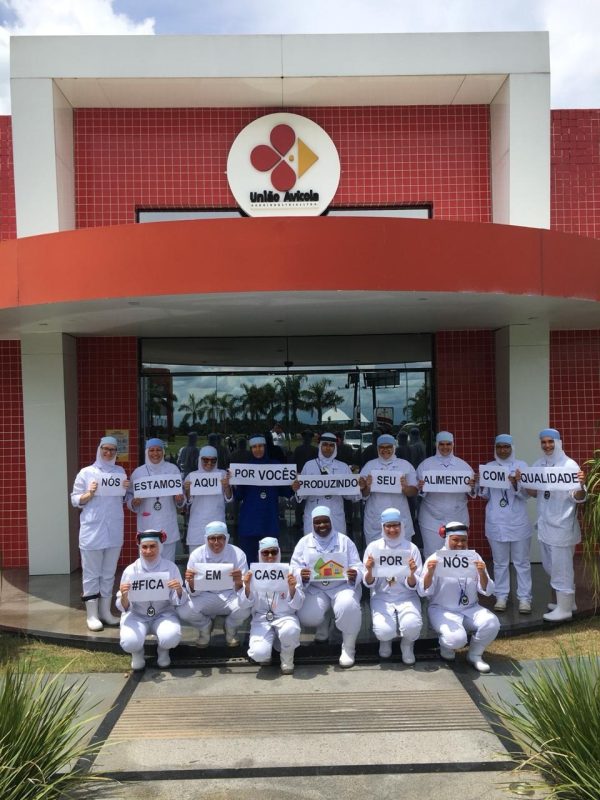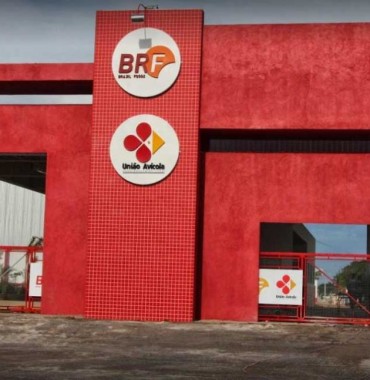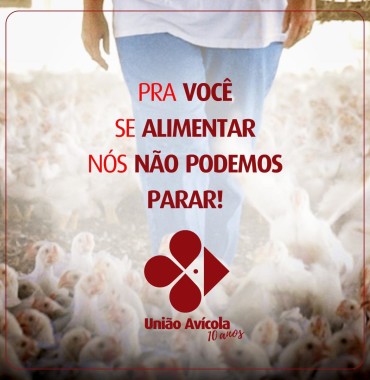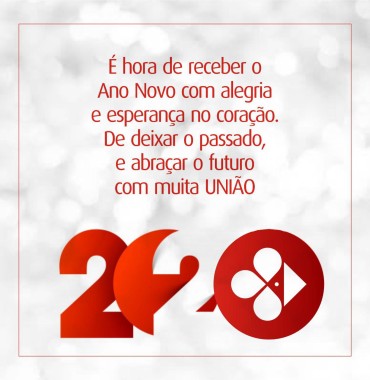MISSION,Products with quality, exceeding expectations, meeting standards with excellence, commitment and enthusiasm, ensuring credibility, results and appreciation of the whole.
UNIAO AVICOLA AGROINDUSTRIAL LTDA
UNIAO AVICOLA AGROINDUSTRIAL LTDA currently slaughters 140 thousand birds a day, from this volume we produce 80% of whole chicken and 20% of cuts, we have a staff of 900 direct employees. For the chicken slaughtering activity, we have export licenses to Argentina, South Korea, Cuba, Egypt, Hong Kong, Yemen, Iran, Japan, Mauritius, Myanma/Burma, Peru, Paraguay, People’s Republic of China, Uruguay and Venezuela.

OUR STAFF

OUR ENTRANCE


WHOLE CHICKEN PROCESS WITH OFFALS.
The chickens destined for slaughter, after fasting and water diet, are loaded in cages and transported to the slaughterhouse. After its arrival at the scale, the cargo information is recorded (integrated company name, GTA, truck license plate and number of chickens) and the batch documentation called FAL (Batch Monitoring Sheet) – (PCC1Q) is received.
Subsequently, the cargo goes to the holding shed, where it waits for the moment to go to the unloading platform. Upon arrival, the first assessment of the birds is carried out, still alive, by an agent of the SIF (Federal Inspection Service), who receives the transport documents of the birds (Animal Transit Guide – GTA and Sanitary Bulletin – BS) analyzing their history.
Then the birds are released for slaughter. The live chickens are then removed from the cages, hung individually by the feet on an automatic conveyor, passing through a device to stun through electronarcosis. Immediately after being stunned, they are bled, passing through the bleeding tunnel for a period of at least 3 minutes. Still through the same conveyor, they pass through the scalding tank with water with controlled temperature. The plucking is done by automatic pluckers and manual repassing, if necessary. After plucking, the SIF carries out the first post-mortem inspection, then the automatic transfer takes place to the evisceration conveyor, which has a cutting disc that cuts the birds’ feet, which are destined for processing (scalding, hair removal and transport through automatic good for cooling); then the carcasses go to the evisceration sector.
At the entrance of the evisceration, the carcasses pass through an initial shower with water under pressure. Then they go through the cutter heads, where they are directed to the cooling area through a conveyor pump. The carcasses are then subjected to equipment capable of performing all operations automatically. Carcasses and viscera follow separate but synchronized lines. Carcass and viscera automatically undergo inspection by SIF auxiliaries (Post Mortem) In the viscera line (offal pack), the liver, heart are extracted from the line. The offals after their separation and cleaning are sent to the cooling.
The carcasses pass through the crop and trachea removal machine and are then sent for neck removal using disarticulation equipment. The carcasses then pass through the neck skinning roller and are then subjected to a transfer, called the control point – PC. Thus, in the overhead conveyor, the carcasses are sent to the washing system (Shower No. 08) and then they go through the PCC1B monitoring stage. The revised carcasses go through the conveyor, pass through the final washing shower and are automatically discharged into the cooling system with cold water (pre-chiller, chiller and chiller). The carcasses go to the re-hanging belt where they are classified by quality, visually and hung on the overhead conveyor, where they still undergo a dripping period,

QUALITY ASSURANCE
To meet the most demanding market standards, União Avícola has a team of Quality Assurance professionals who monitor all stages of the process, ensuring procedures such as Good Manufacturing Practices, product traceability and risk prevention to manufactured products.
Our Self-Control Programs are guided by current norms, rules and legislation, meeting important requirements such as food safety for consumers through the HACCP (Hazard Analysis and Critical Control Points Program) and PPCAAP (Addiction Control Prevention Program) programs. of water in the products) and GMP (Good Manufacturing Practices).
In addition to complying with national and international health legislation, União Poultry has the commitment and commitment with regard to animal welfare practices.
Therefore, we have constant evolutions in the development of the teams regarding the procedures of the factory to guarantee the public health and food of the consumers.
With this, we spare no effort so that the products manufactured in our factory can reach the consumer’s table with an assured quality standard.